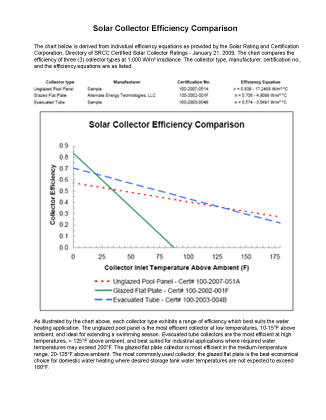Avoid These Mistakes!
Here are some of the most common and some of the most serious mistakes that are made in solar design.
AVOID ARCHITECTURAL EXTREMISM
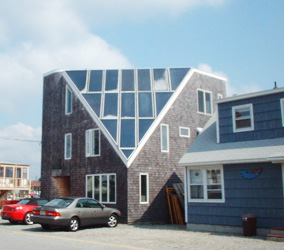 |
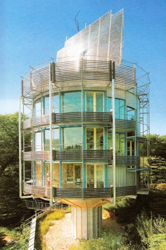 |
 |
It is not necessary for a solar building to look like a freak. There are many options for installing solar collectors and they do not necessarily have to be located upon the building (although they will be up to 10% more efficient if they are.)
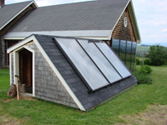 |
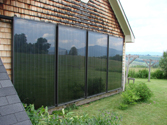 |
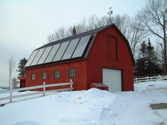 |
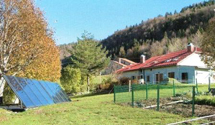 |
Install on the ground
Install vertically
Install on a garage or other side building.
Install on a woodshed or pool cabana.
Be efficient and reduce the number of solar collectors that you need.
There will be no economic cost benefit if the solar heating system lowers the value of the real estate. A highly styled futuristic building may be accepted in some locations, but in others, it may seem out of place and intrusive. Use your imagination and make solar a part of your life. It is not necessary to turn your life and building upside down for solar energy.
CONSERVE ENERGY FIRST
A solar building should first be an energy efficiency building. Then the cost and architectural impact of the building will be reasonable.
SELECT THE RIGHT SOLAR COLLECTOR
It is important to select the right solar collector for the task. A solar collector design that produces high temperatures and has "high technology" may not really produce more useful heat. A bathtub full of warm water contains more heat than in a thimble full of scalding hot water. There is a place for these solar collectors, but they should not be used on low to medium temperature projects. You will need more of these solar collectors, not fewer, because they provide less heat at lower temperatures. Many "high technology" solar collectors have a low net solar aperture. In other words, a 4' x 8' (32 gross square ft) solar collector may have much less net square ft of black absorber material to catch the sun. Vacuum tube collectors may not shed snow.
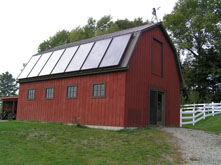 |
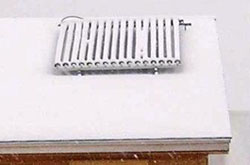 |
The above photographs illustrate some of the issues in deciding upon a solar collector design. The flat plate solar collectors on the left will shed snow and have a good gross/net solar aperture area. The collector on the right has poor net aperture and does not shed snow.
KNOW THE CONSEQUENSES OF DEVIATION FROM THE EXACT ANGLES
It is important to understand that deviations from the "exact perfect angle" for the solar collectors may result in little or no performance loss. Expensive, unsightly mounting racks and extra insulated plumbing are usually not worth the trouble. Deviations of up to 30 degrees make no difference and heat losses from excess piping and wind can be considerable.
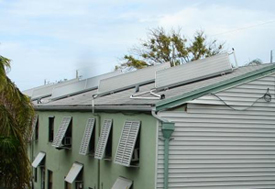 |
 |
INADEQUATE STORAGE
Solar energy systems that do not plan for heat storage when the sun does not shine will have limited value. Most buildings have little need for heat when the sun is shining. You cannot simply add solar collectors to a boiler system.
Do not make a bomb!
Have respect for solar energy. A regular flat plate solar collector can generate temperatures of 270 ° F, which can cause water to flash to steam. High technology, high temperature collectors (which we do not recommend) can generate temperatures of 400°F. You need to plan for stagnation of the solar collectors under full sun conditions and have safe provisions for overheating. Solar heating systems must only fail to a safe condition (fail-safe). Radiantec designs use antifreeze as the heat transfer fluid. Antifreeze will boil at a higher temperature than water.
Do not scald anyone with domestic hot water!
High temperature water must not be presented to the fixtures. 140° F water can cause a third degree burn in only three seconds. Use very reliable anti-scald valves and plumb a U type heat trap so that hot water does not rise up a cold water supply pipe by gravity. Consider the use of a small separate back up tank for domestic hot water that follows the solar storage tank. This design is very efficient and safe because it prevents rapid temperature changes at the fixture.
Do not create a health hazard!
Water that will be used for human consumption should not be allowed to stagnate for prolonged periods of time in an occupied building. There should be no "dead ending", or sections of pipe that do not flow in normal use.
Do not poison anyone!
If you use automotive antifreeze, be sure that pressure relief valves dump to a drain and not on the floor. Pets will drink it. Even "non toxic" antifreeze is not necessarily good for you after it has been in the system for a long time. Solar storage tanks provided by Radiantec use "double walled, vented" heat exchangers for maximum protection.
Excessive simplicity
|
Everything should be made as simple as possible, but not simpler.
-Albert Einstein |
Despite the overall virtues of simplicity, we must not compromise safety or mechanical performance. If something can happen, it will happen someday and solar heating systems should be designed for the lifetime of the building. For long service life and safety, plan for stagnation, overheating, freezing and corrosion.
Our solar technicians are always ready to answer questions.
Call 1-800-451-7593



